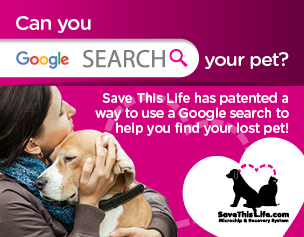Fluid Therapy in a Small Animal Practice

Fluid therapy and uses in a small animal veterinary practice
Fluid therapy supports a variety of treatments for acute and chronic medical conditions. Your clients may not be aware of the benefits or types of fluid administration. As clients continue to be more proactive and knowledgeable about the health and treatment of their pets, help them learn to recognize symptoms of dehydration in their animal, such as
- Lethargy
- Poor appetite
- Sunken eyes
- Sticky gums
- Constipation
- History of vomiting or diarrhea
Pets will show signs of dehydration when the problem is greater than 5 percent. Remind clients that dehydration contributes to a breakdown in their pet’s ability to fight disease and metabolize medications. Decreased circulation to the liver, kidneys and other vital organs can lead to shock and organ failure. They may not know that fluid therapy can be administered for a variety of conditions in addition to dehydration — such as expansion and support of intravascular volume, correction of electrolyte disturbances and encouragement of appropriate redistribution of fluids — and isn’t only used in surgical settings.
When fluid therapy is required, clients may be alarmed by the method of administration. CriticalCareDVM breaks down oral, subcutaneous, intravenous and enteral methods into terms and photographic examples that may help your clients better understand your treatment plan.
Fluid therapy must be individualized to each patient’s size and health status
A 2006 article in Fluid, Electrolyte, and Acid-Base Disorders in Small Animal Practice, cited in Today’s Veterinary Nurse, shows the basic breakdown of total body water (TBW) as follows:
TBW = approximately 60% of a patient’s body weight
67% of TBW = intracellular fluid (ICF)
33% of TBW = extracellular fluid (ECF)
ECF is further divided as follows:
- Interstitial fluid, which bathes cells and tissues (~24% of TBW)
- Plasma, the liquid portion of blood, which constitutes most of intravascular volume (~8%–10% of TBW)
- Transcellular fluid, which comprises synovial joint fluid, cerebrospinal fluid, bile, and the fluid in the linings of the peritoneal cavity, pericardium, and pleural space (~2% of TBW)
The article also states, “A helpful rule of thumb to simplify the distribution of fluids in the body is the 60:40:20 rule: 60% of a patient’s body weight is water, 40% of body weight is ICF, and 20% of body weight is ECF.”
In 2013, the American Animal Hospital Association and the American Association of Feline Practitioners jointly published Fluid Therapy Guidelines for Dogs and Cats to establish fluid therapy standards and best practices. The guidelines outline recommendations for fluid choice, rate and administration route. The informational toolkit not only outlines fluid therapy guidelines, it includes a model protocol and algorithm (pages 16-17), staff responsibilities (page 19), key task checklist (page 22) and client education tools (pages 20-21).
Other resources:
VeterinaryMedicineDVM360 published a series about ways to monitor fluid therapy perioperatively and to gear fluid therapy protocols to each individual animal.
If one of your clients needs to administer fluids to an ill or older pet at home, Long Beach Animal Hospital shares detailed instructions here.
The Merck Manual of Veterinary Medicine’s fluid therapy guidelines can be found here.
For more information or supplies to enhance patient safety such as fluid pumps, bags, catheters, connections or collars, contact your Covetrus North America representative at 855.724.3461.
Sources:
https://www.lbah.com/word/fluid-therapy/
http://criticalcaredvm.com/understanding-fluid-therapy-dogs-cats/
DiBartola SP, Bateman S. Fluid, Electrolyte, and Acid-Base Disorders in Small Animal Practice. 3rd ed. St. Louis, MO: Saunders Elsevier; 2006.
https://www.aaha.org/professional/resources/fluid_therapy_toolkit.aspx
http://veterinarymedicine.dvm360.com/new-way-monitor-and-individualize-your-fluid-therapy-plan


Working Here
Our team members are encouraged to be the best they can be... at Covetrus we believe we impact one another.
Learn MoreNews & Events
FDA Cautions Pet Owners Not to Feed Texas Tripe Inc. Raw Pet Food Due to Salmonella, Listeria Monocytogenes
The U.S. Food and Drug Administration is cautioning pet owners not to feed their pets any of the Texas Tripe brand raw frozen pet food listed below because several samples of Texas Tripe raw pet food have tested positive for Salmonella and/or L. mono.
Careers
Are you looking for a place to let your talents shine? At Covetrus, we help our practitioner customers better serve their patients and take pride in providing the best customer experience possible. Search our open positions to see our available opportunities.
Newsletter
Stay current with what’s going on with Covetrus, subscribe to receive our newsletter and email communications. Subscribers will receive the latest information in practice management, sales and marketing, animal health, and more.



-3-(1).png?sfvrsn=2d806d73_0)

Leave a comment